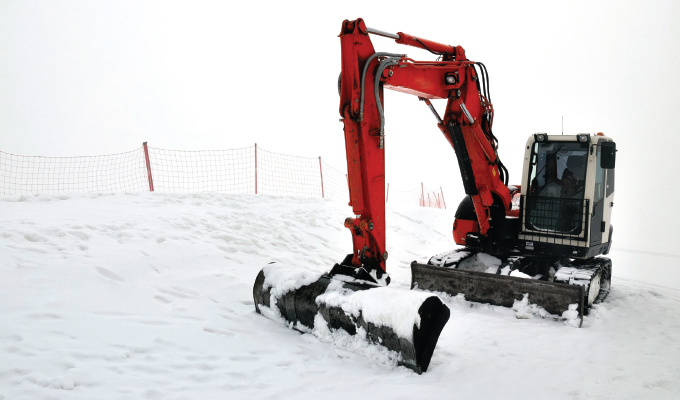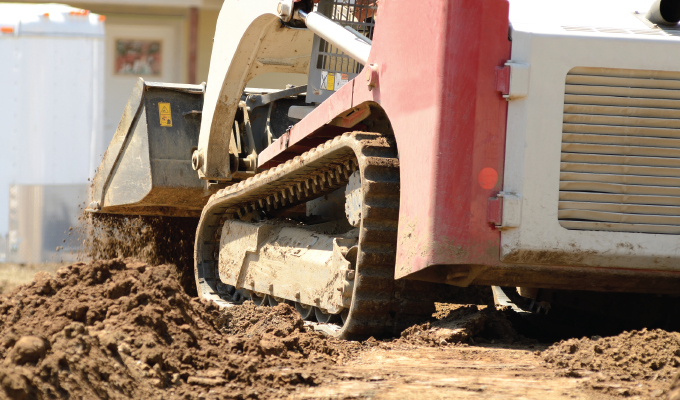You already realize the importance of winterizing your construction equipment before cold weather hits in the winter. But did you know that you should be taking similar measures ahead of hot weather in the spring and summer to ensure that your equipment runs as efficiently as it can?
You’re probably thinking that you’ve never taken any sort of “dewinterizing” steps before and your equipment seems to work just fine. Well, it’s true that you can probably get by without prepping your equipment for the summer. But by opting not to take these steps, you’re decreasing the life of your equipment, making it more difficult—or even impossible—for your equipment to operate at full capacity and increasing the opportunity for small issues to turn into larger ones.
Dewinterizing will protect your equipment against hot temperatures, it will improve your equipment’s ability to perform when it’s hot and it will extend the life of your equipment, which increases the value you get from your company’s investments.
If you’re not sure what you should be doing to prepare your equipment for hot weather, here are a few ways that you can get started now.
REGULAR MAINTENANCE
This one seems like a no-brainer but it’s one of the most important (and most overlooked) steps to ensure your equipment runs well in all weather conditions. If you have a mechanic at your disposal then this should just be a matter of staying on top of maintenance scheduling and making sure it gets done. You’ll also want to schedule time for your equipment in the shop for bigger jobs or if you don’t have a mechanic who goes job-to-job.
Even if you already have maintenance scheduled and being performed routinely, you should double check that everything is being done properly since it’s easy for construction mechanics to get complacent about routine work. Regular maintenance on heavy equipment should include things like:
- Oil checking/changing
- Air filter checking/changing
- Checking/changing other fluids & lubricants (powertrain fluids, grease, etc.)
- Checking for broken parts (lights, glass, etc.)
- Checking for worn parts (rubber tracks)
If you don’t have a great budget or enough manpower to do routine maintenance as recommended then you can also encourage your workers to check the equipment before, during, and after they use it. Ideally, this is already happening, but in many cases it doesn’t. Getting operators on board will allow you to identify and resolve issues more quickly, which can have a major impact on the equipment’s condition and lifespan.
OPERATE WHEN COOLER
When you operate your machinery in cold weather, the impact is often very noticeable. But believe it or not, the heat can take a great toll on your equipment as well.
When temperatures get really high, it impacts how your equipment parts and fluids work within the machine. One example of this is that your fluids may get used up more quickly and may even evaporate during usage. When your fluids and lubricants get used up more quickly, it increases the risk of damaging the equipment.
One way to protect against this happening is to look ahead at which days of the week are supposed to be the hottest and schedule work for your equipment on the cooler days, while scheduling work without that equipment for the hotter days. You can even use the hot days to get the equipment checked out for regular maintenance.
If you’re unable to schedule your equipment to run on cooler days, consider telling your workers to shut the equipment down every now and then to give it a break. This will allow your equipment to cool down and not get overworked.

PROPER CARE
Depending on the type of work you do, the number of jobs you have going on, the size of your fleet and other factors, you might use certain equipment during certain seasons.
If this is the case for you then you probably have equipment sitting around all winter long and then when spring and summer roll around you expect it to fire up as usual. But the longer your equipment sits, the more difficult it will be to get it going again when you need it.
Even worse, letting your equipment sit for long periods without being checked or stored properly increases the chances of it getting damaged or malfunctioning.
One easy step for proper off-season storage is to make sure the equipment is clean when you stop using it. You can get by with letting dirt, mud, and other debris hang around when you’re using equipment daily (although you should really be cleaning it every day) but letting debris pile up and sit for extended periods of time is just asking for trouble. Other steps you can take to safely store off-season equipment include:
- Draining fluids
- Shutting off fuel lines
- Covering or storing indoors (out of sunlight) if possible
- Store with hydraulic parts lowered
- Refer to your equipment manual for more
CLOSING THOUGHT
The equipment you use makes up some of the largest investments your company makes on an ongoing basis. You can protect those investments and get the most from them by properly preparing for hot and cold temperatures and by taking care of the machinery when it’s idle.
For more information
To learn more about care for rubber tracks from Dominion Equipment Parts, visit www.depparts.com.
Modern Contractor Solutions, May 2020
Did you enjoy this article?
Subscribe to the FREE Digital Edition of Modern Contractor Solutions magazine.



